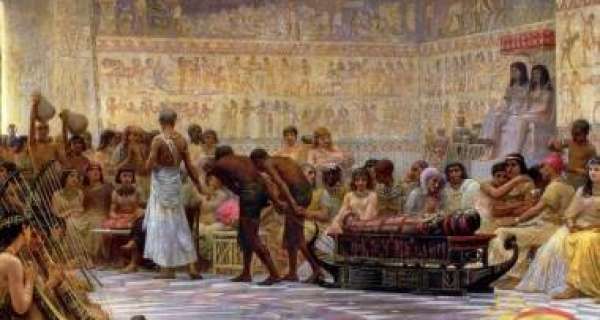During a total lunar eclipse, the Earth blocks the Sun's light from reaching the Moon. Astronauts on the Moon would then see the Earth completely eclipse the Sun. (They would see a bright red ring around the Earth as they watched all the sunrises and sunsets happening simultaneously around the world!) While the Moon remains completely within Earth's umbral shadow, indirect sunlight still manages to reach and illuminate it. However, this sunlight must first pass deep through the Earth's atmosphere which filters out most of the blue colored light. The remaining light is a deep red or orange in color and is much dimmer than pure white sunlight. Earth's atmosphere also bends or refracts some of this light so that a small fraction of it can reach and illuminate the Moon.
The total phase of a lunar eclipse is so interesting and beautiful precisely because of the filtering and refracting effect of Earth's atmosphere. If the Earth had no atmosphere, then the Moon would be completely black during a total eclipse. Instead, the Moon can take on a range of colors from dark brown and red to bright orange and yellow. The exact appearance depends on how much dust and clouds are present in Earth's atmosphere. Total eclipses tend to be very dark after major volcanic eruptions since these events dump large amounts of volcanic ash into Earth's atmosphere. During the total lunar eclipse of December 1992, dust from Mount Pinatubo rendered the Moon nearly invisible.
All total eclipses start with a penumbral followed by a partial eclipse and end with a partial followed by a penumbral eclipse (the total eclipse is sandwiched in the middle). The penumbral phases of the eclipse are quite difficult to see, even with a telescope. However, partial and total eclipses are easy to observe, even with the naked eye.
Total Lunar Eclipse of 2000 Jan 20-21
Beginning (right), middle (center) and end (left) of totality














